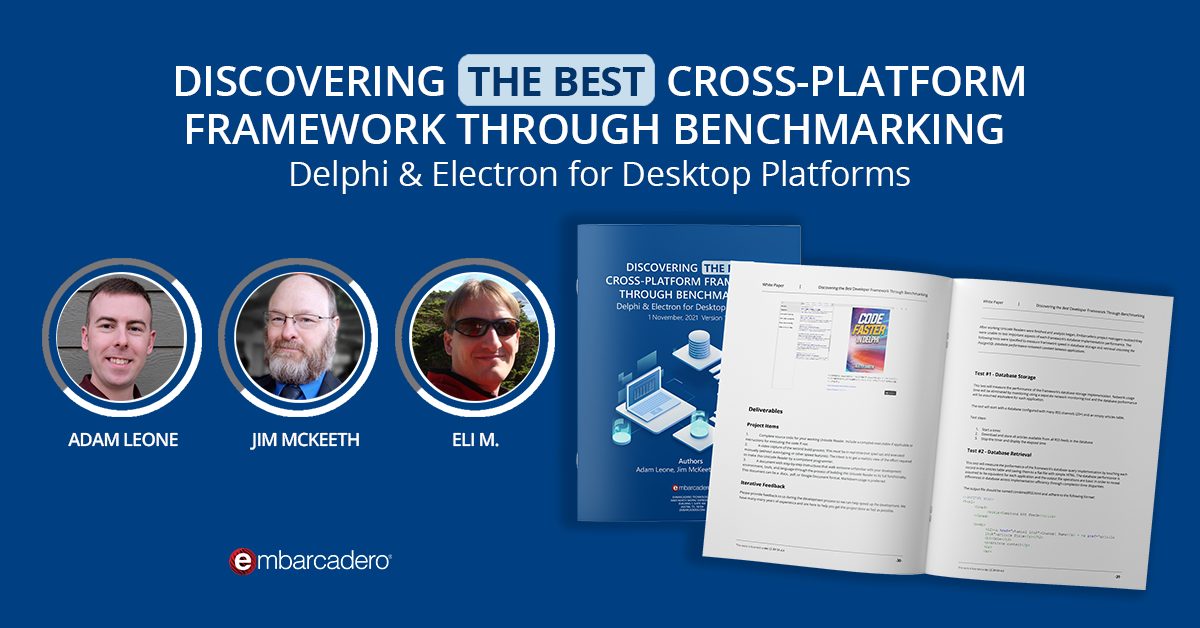
How much effort does a developer have to put in to build a great-looking, intuitive and functional user interface? Much depends on how much the IDE or framework the developer is using facilitates the process through a WYSIWYG (What You See is What You Get) approach, ready-made visual design components, libraries and tools, and a low-code approach that automates as much of the repetitive parts of the process as possible.
When businesses choose a software framework they begin a long-term relationship for the duration of their application’s lifecycle. Given the strategic consequences of this decision, businesses must carefully consider how frameworks enhance developer productivity, business functionality,
application flexibility, product performance, the long-term viability of that framework, and the inherent security in each framework’s design and technology. The ideal framework demonstrates strength in each category by minimizing product time-to-market, reducing maintenance costs, supporting product variety, and facilitating a superior customer experience.
The “Discovering The Best Cross-Platform Framework Through Benchmarking” whitepaper evaluates two frameworks supporting multi-platform desktop application development: Delphi and Electron.
This is the second in a series of blog posts looking more closely at each of the 26 individual metrics used in the study, and how Delphi and Electron each fared on these metrics. The first can be found here.
Download the complete whitepaper here
Benchmark Category: Developer Productivity
Developer productivity is the measure of effort and code required for developers to complete typical development tasks. Productivity directly impacts product time-to-market and long-term labor costs so tools that increase developer productivity have substantial impacts on business timelines and bottom lines. Productivity can be realized in two distinct ways – reduced coding requirements due to native libraries, and IDE tools like code-completion and visual design.
IDEs with greater library breadth generally result in fewer lines of code per application and produce a clean, lean codebase that minimizes opportunities for bugs or maintenance problems later in the product life cycle.
Benchmark Metric 2/26: UI Design Approach
UI Design Approach Metric: Does the framework’s IDE allow for graphical/visual application creation and provide a “What You See Is What You Get” (WYSIWYG) view model? IDEs that support development through “drag and drop” components or other visual methods allow users to engage different methods of thought and creativity as they work. Visual creation through WYSIWYG editors preclude businesses from needing every version of physical hardware to view platform-native styling.
Benchmarking Results
Delphi Score: 5 (out of 5)
Delphi’s RAD Studio IDE offers a What-You-See-Is-What-You-Get (WYSIWYG) design experience with drag-and-drop components for visual GUI design. The designed GUI can be viewed using native Android/iOS/Windows/macOS styling or custom styles and can simulate application appearances within mobile devices of varying screen sizes. Components can also be resized and have their properties adjusted in the Object Inspector without touching code, allowing rapid prototyping through visual development. Delphi also offers the ability for a developer to edit the UI using a simple YAML style language definition.
Electron Score: 3 (out of 5)
Electron lacks a native IDE but can be developed using text editors and command line tools, Electron doesn’t include a WYSIWYG design experience or drag-and-drop components by default. The UI can be created using HTML5 and CSS styling. Unless the developer chooses an IDE like Visual Studio, Electron applications must be compiled and run to view the project’s GUI.
Download the complete whitepaper here
Design. Code. Compile. Deploy.
Start Free Trial Upgrade Today
Free Delphi Community Edition Free C++Builder Community Edition






